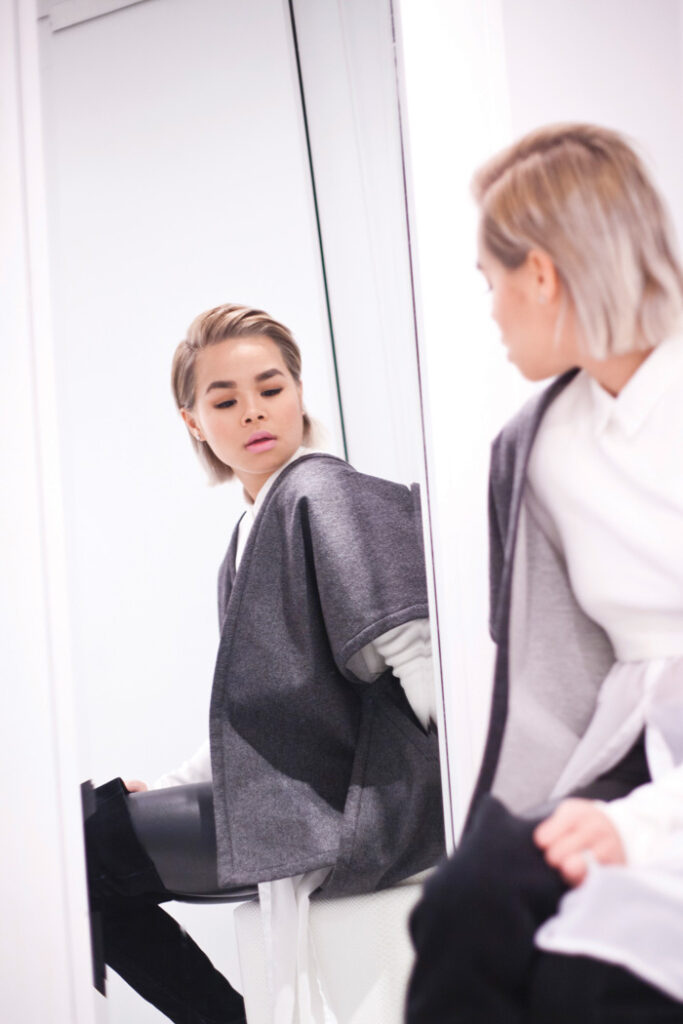 Mt. Airy’s Nesting House is a bastion for eco-aware parents
Mt. Airy’s Nesting House is a bastion for eco-aware parents
by Ariela Rose
For many, choosing a baby’s diapering system is as easy as running to the nearest convenience store and grabbing a box of Pampers. But for those with environmental concerns, cloth diapers may be the best choice. In a reusable diaper landscape full of cleaning services, snappies and bamboo liners, where is a new parent to begin?
Jennifer Kinka, co-owner of Mt. Airy’s Nesting House, has the answers, and is ready to guide frazzled parents as they tackle diaper duty. Since the store’s opening in June, Kinka and her business partner Meredith Jacoby have been stocking the shelves with helpful products for eco-minded parents. Jacoby handles the new and used merchandise, while Kinka is the store’s cloth diapering guru.
“We’ve been friends and we often talked about sustainable ways to have babies,” says Kinka. “Eventually we thought, ‘We should open a store that has cloth diapers and gently used stuff, and then newer, organic, sustainably created kind of stuff as well.’”
Kinka is no stranger to the world of cloth diapers. Prior to opening the Nesting House, she ran the Philadelphia Cloth Diaper Company out of her home. She also had the hands-on experience of using them on her own children. “I ordered hundreds of different types of diapers to try and find out what held up over time, what actually worked well,” she explains. “My market research was definitely done on them.”
These days, there is a vast array of cloth diapering systems available. Gone are the days of cloth squares requiring intricate folding techniques and dangerous pins—today’s models are easier to use and less bulky. They are also more sustainable. A look through the Nesting House’s cloth diaper catalog reveals a plethora of options made from earth-friendly fabrics, including organic cotton, hemp and bamboo.
The reusability of cloth diapers, coupled with new sustainable fabric options, make a strong case for cloth as the most environmental option. But the amount of energy and water used to clean them has been cause for concern. “One thing disposables have on cloth is water use,” says Kinka. “You use more water in washing than is used to create disposables. But, especially in our area, water is the least of our issues. Resources, energy and trash are bigger issues.”
Disposable diapers create an incredible amount of waste. According to the Clean Air Council, 18 billion disposable diapers are thrown out each year. This waste eventually finds its way into landfills, where it will sit for at least 300 years.
Still, many new parents are worried that cloth diapering will turn into a complicated mess. This is where Kinka’s monthly workshops come in handy. She starts the course by outlining the differences between cloth and disposables, explains the best ways to “go cloth” and ends with a tutorial on tools available to help care for cloth diapers.
Kinka never pushes cloth on any of her customers, but is confident that she has changed the minds of many skeptics. As she puts it: “Even people that are totally not on board when they walk in, walk out thinking, ‘Wow, maybe we could do that.’”
606 Carpenter Ln., 215-438-1600, thenestinghouse.net,
10 a.m. – 6 p.m. Tues. – Fri.; 10 a.m. – 5 p.m. Sat.; 11 a.m. – 4 p.m. Sun.; New Mom’s Group meets Mondays, 10 a.m. – noon





